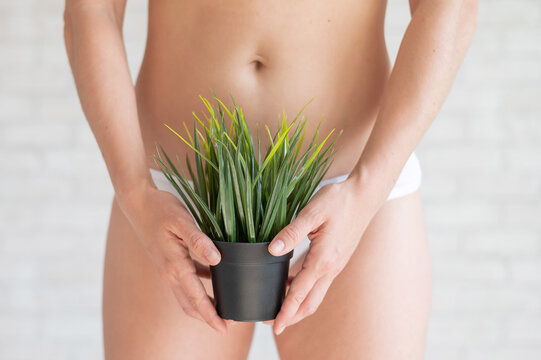
Growing Herbs in Your Garden: A Guide to Fresh, Flavorful, and Medicinal Plants
Herbs are the foundation of any flourishing nursery. Whether you’re a carefully prepared groundskeeper or a novice, developing spices offers a mix of excellence, reasonableness, and medical advantages. Spices are known for their assorted purposes in cooking, normal medication, and even bug control, making them an optimal expansion to any garden.
In this article, we’ll investigate the best spices to develop, their exceptional advantages, and how to really focus on them. By and by, you’ll be prepared to develop a thriving spice garden that upgrades your dinners, works on your well-being, and carries scent to your outside space.
Advantages of Developing Herbs in Your Nursery
Before plunging into explicit spices, we should investigate why spices ought to be a staple in your nursery:
1. Culinary purposes
New spices raise the kind of dish, from plates of mixed greens to simmered meats. By developing your own, you’ll have simple access to natural, sans pesticide spices at their pinnacle newness. Besides, reaping new spices straightforwardly from your nursery adds layer of fulfillment to your cooking.
2. Medical advantages
Numerous spices have therapeutic properties, offering regular solutions for different diseases. Spices like peppermint, chamomile, and lavender are notable for their quieting impacts, while others like oregano and thyme have antiviral and antibacterial characteristics.
3. Tasteful and Aroma
Spices are practical as well as outwardly engaging. They can add surface, variety, and aroma to your nursery. Lavender’s purple blossoms, rosemary’s dim green needles, and basil’s energetic leaves carry life to any garden space, while the fragrances of mint, sage, and lemon medicine swirl around with invigorating smells.
4. Drawing in pollinators and rejecting nuisances
Certain spices draw in useful bugs like honey bees and butterflies, which assist with pollinating different plants in your nursery. Spices like basil, dill, and fennel are especially alluring to pollinators. Then again, spices like mint and marigold can assist with preventing garden bothers like aphids, mosquitoes, and even rodents.
Presently, we should investigate the absolute best spices to fill in your nursery.
Best Spices to Fill in Your Nursery
1. Basil (Ocimum basilicum)
- Developing Circumstances: Full sun, very depleted soil
- Utilizes: Culinary (particularly in Mediterranean and Asian dishes)
- Medical advantages: calm, wealthy in cell reinforcements
Basil is one of the most well-known spices and herbs to develop because of its adaptability in the kitchen. With its sweet, peppery flavor, it coordinates well with tomatoes, pasta, and mixed greens. Basil flourishes in warm climates and needs a lot of daylight to develop lavish, tasty leaves. Squeezing off the bloom buds as they seem will empower bushier development and keep the leaves from turning out to be unpleasant.
For assortment, think about establishing various kinds of basil, like sweet basil for Italian dishes, Thai basil for Asian food, or lemon basil for a citrusy wind in plates of mixed greens.
2. Mint (Mentha spp.)
- Developing Circumstances: Halfway shade to full sun, clammy soil
- Utilizes: Culinary (teas, pastries), regular irritation repellent
- Medical advantages: helps processing, assuages migraines, and mitigates
Mint is a quickly developing, solid spice that spreads rapidly, making it ideal for ground cover or holder cultivating to keep it from surpassing different plants. With its cool, reviving flavor, mint is an ideal addition to teas, mixed greens, pastries, and even mixed drinks. There are a few assortments of mint, including peppermint and spearmint, each offering marginally various flavors and uses.
Mint is likewise known for its therapeutic properties, especially for mitigating stomach-related issues and migraines. Its solid smell repels bugs like mosquitoes and subterranean insects, making it an important expansion to your nursery.
3. Rosemary (Rosmarinus officinalis)
- Developing Circumstances: Full sun, very depleted soil
- Utilizes: culinary (simmered meats, soups), fragrant
- Medical advantages: lifts memory, mitigates, and further develops flow.
Rosemary is a perpetual spice that adds an unmistakable, piney flavor to dishes. Its solid nature makes it ideal for drier nurseries, as it flourishes in very depleted soil with negligible water. In the kitchen, rosemary is in many cases used to prepare cooked meats, potatoes, and bread. Past its culinary purposes’, major areas of strength for rosemary can revive any space, and its natural oils are in many cases utilized in fragrant healing.
Furthermore, rosemary is known to further develop memory and focus, making it a famous spice for teas and implants. Ordinary pruning of rosemary energizes new development, and it could be molded into enlivening nursery shrubbery.
4. Thyme (Thymus vulgaris)
- Developing Circumstances: Full sun, very depleted soil
- Utilizes: culinary (soups, stews, marinades), restorative
- Medical advantages: antibacterial, antifungal, helps resistant framework
Thyme is a flexible spice of herbs that is often utilized in Mediterranean cooking and coordinates well with meats, vegetables, and soups. This solid lasting is dry spell open-minded once settled, making it ideal for rock nurseries or holders. It fills best in full sun and all-around depleted soil, flourishing in unfortunate soil conditions where different plants could battle.
Thyme’s antibacterial and antifungal properties make it a brilliant normal solution for sore throats, respiratory diseases, and skin conditions. It likewise has resistant supporting properties, making thyme tea an incredible choice during the cold and influenza seasons.
5. Lavender (Lavandula angustifolia)
- Developing Circumstances: Full sun, all-around depleted soil
- Utilizes: Fragrant, therapeutic, elaborate
- Medical advantages: decreases tension, advances unwinding, assists with rest
Lavender is perhaps one of the most fragrant spices of herbs you can develop, known for its delightful purple blossoms and quiet aroma. It flourishes in bright, all-around depleted regions and requires negligible support once settled. Lavender is much of the time utilized in sachets, medicinal oils, and teas for its quieting impacts, which assist with decreasing tension and further developing the best quality.
In the nursery, lavender draws in pollinators like honey bees and butterflies, while its solid fragrance repels bugs. The blossoms are likewise edible and can be utilized in baking or added to drinks for a botanical turn.
6. Parsley (Petroselinum crispum)
- Developing Circumstances: Full sun to halfway shade, wet soil
- Utilizes: Culinary (trims, mixed greens, sauces)
- Medical advantages: Plentiful in nutrients C and K, upholds bone wellbeing, further develops assimilation
Parsley is often seen as an embellishment; however, an exceptionally nutritious spice merits more consideration. Plentiful in nutrients C, A, and K, parsley upholds bone well-being and processing. It’s a biennial spice, meaning it develops for two seasons before ceasing to exist; however, it’s generally expected to be treated as a yearly in many nurseries.
Parsley flourishes in both full sun and fractional shade and fills best in sodden, very much depleted soil. There are two principal assortments: wavy parsley, which is perfect for decorating, and level leaf parsley, known for its more grounded flavor in cooking.
7. Cilantro (Coriandrum sativum)
- Developing Circumstances: Full sun, clammy, very much depleted soil
- Utilizes: Culinary (salsas, curries, trims)
- Medical advantages: detoxifies weighty metals, helps assimilation, mitigating
Cilantro is a spice that adds a new, citrusy flavor to dishes like salsas, curries, and mixed greens. A yearly plant develops rapidly but bolts (goes to seed) in a blistering climate. For constant harvests, plant cilantro in cooler months or develop it in fractional shade throughout the midyear.
In addition to the fact that cilantro is delightful, its seeds (called coriander) are likewise a flavor with culinary and restorative purposes. Cilantro is known for its capacity to detoxify weighty metals from the body and advance absorption.
8. Dill (Anethum graveolens)
- Developing Circumstances: Full sun, very depleted soil
- Utilizes: Culinary (pickling, sauces), draws in gainful bugs
- Medical advantages: helps absorption, lessens gas, assuages feminine spasms
Dill is a fluffy spice that is often utilized in pickling, salad dressings, and sauces. It fills best in full sun and very depleted soil. Dill is a yearly spice, so it should be replanted every year, except it self-seeds effectively and can return normally in the accompanying season.
Past its culinary purposes, dill is known for its stomach-related benefits, frequently used to alleviate upset tolerances or ease gas. Dill additionally draws in useful bugs like ladybugs and ruthless wasps, which assist with controlling irritations in your nursery.
Really focusing on Your Spice Nursery
Developing spices is moderately simple; however, like any plant, they require a regard for flourishing. Here are a few fundamental ways to really focus on your spice garden:
1. Legitimate Watering
Spices need steady watering, particularly during hot, dry periods. Most spices favor very depleted soil, so be mindful so as not to overwater, as wet soil can prompt root decay. Water your spices promptly during the day to permit any overabundance of dampness to vanish before supper.
2. Daylight Needs
Most spices flourish in full sun, requiring something like 6-8 hours of daylight day to day. Nonetheless, a few spices like mint, parsley, and cilantro can endure half shade, particularly in hotter environments where a lot of direct daylight can make them shrink.
3. Standard Collection
Collecting your spices/herbs routinely advances bushier development and keeps them from blossoming too early. For spices like basil, squeezing off the top leaves supports horizontal development, giving you a fuller plant. Continuously utilize spotless, sharp scissors or shears while collecting.
4. Bug Control
Spices are by and large bug-safe, yet a few irritations like aphids, bug vermin, and whiteflies can in any case cause harm. You can hinder bugs by establishing buddy spices like basil, which repels flies and mosquitoes, or utilizing normal insect poisons like neem oil.
Conclusion: Growing Herbs for a Better, More Tasty Nursery
Developing spices or herbs in your nursery is a staggeringly remunerating experience. In addition to the fact that they improve the kind of your feasts, however, they likewise offer various medical advantages, from supporting assimilation to advancing unwinding. With negligible consideration, spices can flourish in different circumstances, making them open to even the most fledgling nursery workers.
Whether you’re establishing a little kitchen spice garden or integrating spices into your bigger scene, these flexible plants will furnish you with new, natural produce and fragrant magnificence for seasons to come.




Leave a Reply